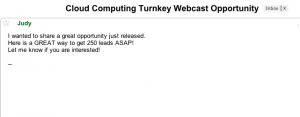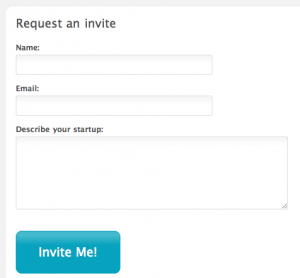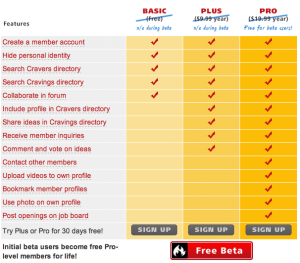On Tuesday, April 6th, our company officially changed our name. To make a long story short, the name “Aprigo” didn’t really say anything about what we do, and our product name, CloudLock definitely does. So we decided to make the switch.
And today, we got some very good coverage:
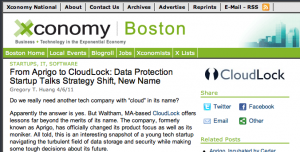
From xconomy: “Do we really need another tech company with “cloud” in its name?
Apparently the answer is yes. But Waltham, MA-based CloudLock offers lessons far beyond the merits of its name. The company, formerly known as Aprigo, has officially changed its product focus as well as its moniker. All told, this is an interesting snapshot of a young tech startup navigating the turbulent field of data storage and security while making some tough decisions about its future.”
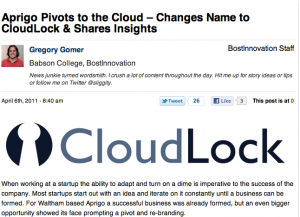
From Bostinnovation: “When working at a startup the ability to adapt and turn on a dime is imperative to the success of the company. Most startups start out with an idea and iterate on it constantly until a business can be formed. For Waltham based Aprigo a successful business was already formed, but an even bigger opportunity showed its face prompting a pivot and re-branding.
CloudLock‘s (previously Aprigo) flagship product Aprigo Ninja managed client’s on-premise data, but after building an enterprise cloud solution and seeing massive growth with it, the company decided to shift focus. With the shift came the decommissioning of Ninja and upsetting plenty of existing customers.”
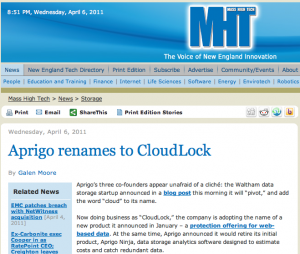
From MassHighTech: “Aprigo’s three co-founders appear unafraid of a cliché: the Waltham data storage startup announced in a blog post this morning it will “pivot,” and add the word “cloud” to its name.
Now doing business as “CloudLock,” the company is adopting the name of a new product it announced in January – a protection offering for web-based data. At the same time, Aprigo announced it would retire its initial product, Aprigo Ninja, data storage analytics software designed to estimate costs and catch redundant data.”
Changing Our Name
Aside from buying the domain and getting the trademark, here’s a list of what we did to change our name.
1. Land Grab! After getting the domain and trademark, it was time to register our new name on all the services we use. This included:
- Twitter
- Facebook
- YouTube
- Viddler
And more.
2. Switching our name– There are a few services that let us simply change our company name rather than starting from scratch (like we had to do with YouTube and Twitter). A prime example is LinkedIn. In the case of LinkedIn, I simply had to submit a helpdesk ticket and ask to have our name changed. A LinkedIn rep responded within 24 hours and changed our name immediately. The only thing we had to do was have each employee go into their profile and change their current company name.
3. Setting up the site– Our site is built on WordPress, and was developed by Fresh Tilled Soil, so we had them do a full backup of aprigo.com and create a new instance for cloudlock.com.
4. Search and replace– Using a search and replace plugin, I simply searched for every mention of Aprigo and replaced it with CloudLock. And since we had many mentions of Aprigo CloudLock on the site, I ended up with a bunch of “CloudLock CloudLock” on pages. That was dumb.
5. Changing logos and images– We have an incredible graphic designer, and he updated all the Aprigo images with CloudLock replacements.
6. 301 redirect time- This was the fun part, and I mean the opposite. As we’d built up a great deal of link juice and highly ranked pages, I didn’t want to just throw away our search equity by doing a full domain redirect. Instead, I used a 301 redirect plugin to redirect each individual page on aprigo.com to its corresponding page on cloudlock.com. We’re talking about hundreds of pages. A pain, but totally worth it.
7. Changing our Google Apps Marketplace listing- Since CloudLock is on the Google Apps Marketplace, I had to change our listing and our vendor page.
8. Write a blog post explaining the name change– Did that here.
And that’s about all. The whole process took about a day to execute (after a few days of planning).
